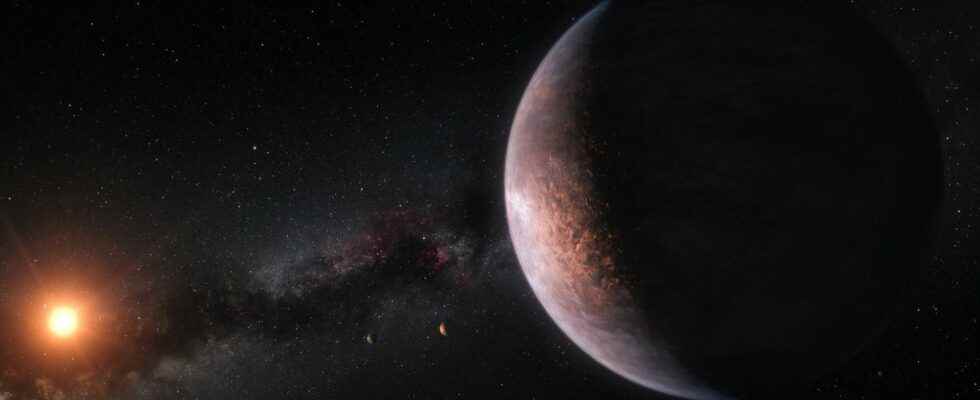You will also be interested
[EN VIDÉO] Tess launched to conquer new habitable lands The exoplanet hunter Tess was launched by a SpaceX Falcon 9 rocket on April 18, 2018. This successor to Kepler will settle far from Earth to monitor 200,000 stars for two years. By regularly measuring the luminosity of each one, this observatory will detect the possible passages of planets (transits). Astronomers will then extend the list of candidates for habitable exoplanets, which will be studied by the next generation of telescopes.
Of them new super-earths added today to the list of exoplanets discoveries. Unearthed thanks to the telescopes of the Speculoos project (Search for habitable Planets EClipsing ULtra-cOOl Stars) which consists of looking for habitable planets around stars that are dim and cold, they orbit around thestar LP 890-9, also called TOI-4306 or Speculoos-2.
This little dwarf star red is about 100 light years Earth, and happens to be the second coldest star around which we have never found exoplanets! After Trappist-1, the coldest star known to host planets, 7 to its credit! The two new findings were detailed in a study published in the journal Astronomy & Astrophysics.
Orbital periods of 2 and 8 days, yet one of the two is in the zone of habitability
The two planets orbit their star rapidly: the innermost completes a full rotation in just 2.73 days, and the other in 8.46 days! The inner planet, called LP 890-9b, is 30% larger than Earth. Initially detected by the space telescope Tess (for Transiting Exoplanet Survey Satellite) of the Nasawhich detects nearby exoplanets by the method of transitsit was then confirmed, then characterized, thanks to Speculoos.
“TESS searches for exoplanets using the transit method, simultaneously monitoring the brightness of thousands of stars, looking for slight obscurations that might be caused by planets passing in front of their stars.explains Laetitia Delrez in a communicatedfirst author of the study and postdoctoral researcher at the University of Liège.
“However, follow-up with ground-based telescopes is often needed to confirm the planetary nature of detected candidates and refine measurements of their orbital sizes and properties. » Indeed, the Tess telescope is not very sensitive to infraredand the star LP 890-9 emits mainly in this area.
As for the second planet, the outermost, it is this which attracts the most attention from researchers: baptized LP 890-9c and of a size similar to LP 890-9b, it would be located in the habitable zone although it has a very short orbital period: only 8.5 days! “Although this planet orbits very close to its star, at a distance about 10 times shorter than that of Mercury around our Sunthe amount ofirradiation stellar that it receives is still weak, and could allow the presence of water liquid on the surface of the planet, provided you have a atmosphere sufficientexplains Francisco J. Pozuelos, co-author of the study and researcher at the Institute ofAstrophysics from Andalusia. This is because the star LP 890-9 is about 6.5 times smaller than the Sun and has a surface temperature half that of our star. This explains why LP 890-9c, despite being much closer to its star than Earth is to the Sun, might still have conditions suitable for life. »
A prime target for the search for life by James-Webb
This discovery is thus encouraging for the search for life: the star LP 890-9 becomes one of the main targets of choice for James Webb, after the planets of the Trappist-1 system! According to Laetitia Delrez, she would even be a prime target, especially for the biggest traceability chemistry of its atmosphere.
“This comparison, however, ignores the fact that LP 890-9c is located near the inner limit of the habitable zone and therefore could have a particularly water vapor-rich atmosphere, which would then enhance its atmospheric signals. In addition, models often differ as to the exact position of this interior limit of the habitable zone depending on the characteristics of thestar. The discovery of LP 890-9c therefore offers a unique opportunity to better understand and constrain the conditions of habitability around the smallest and coolest stars in our solar neighborhood.”she concludes.
Interested in what you just read?
